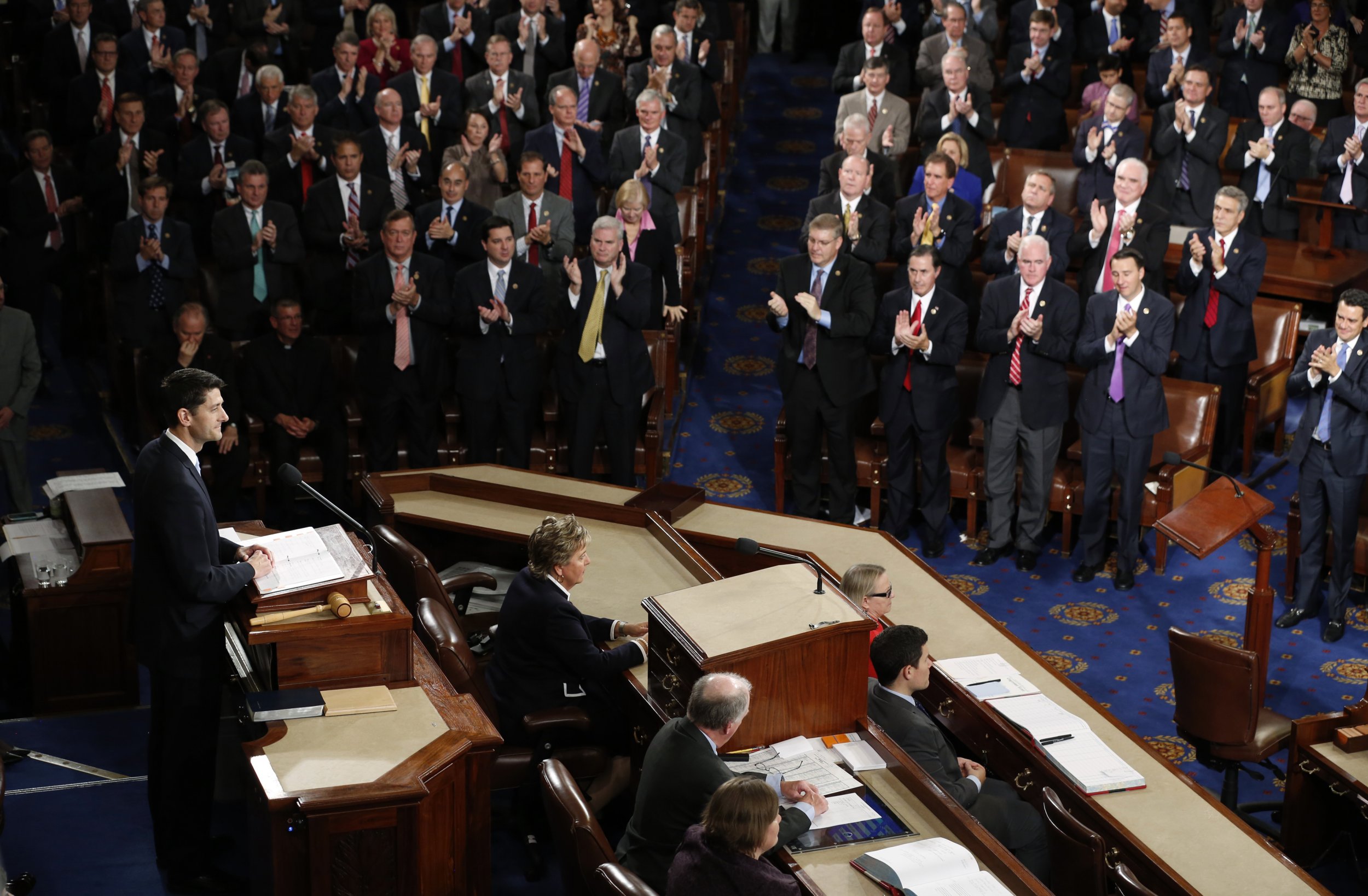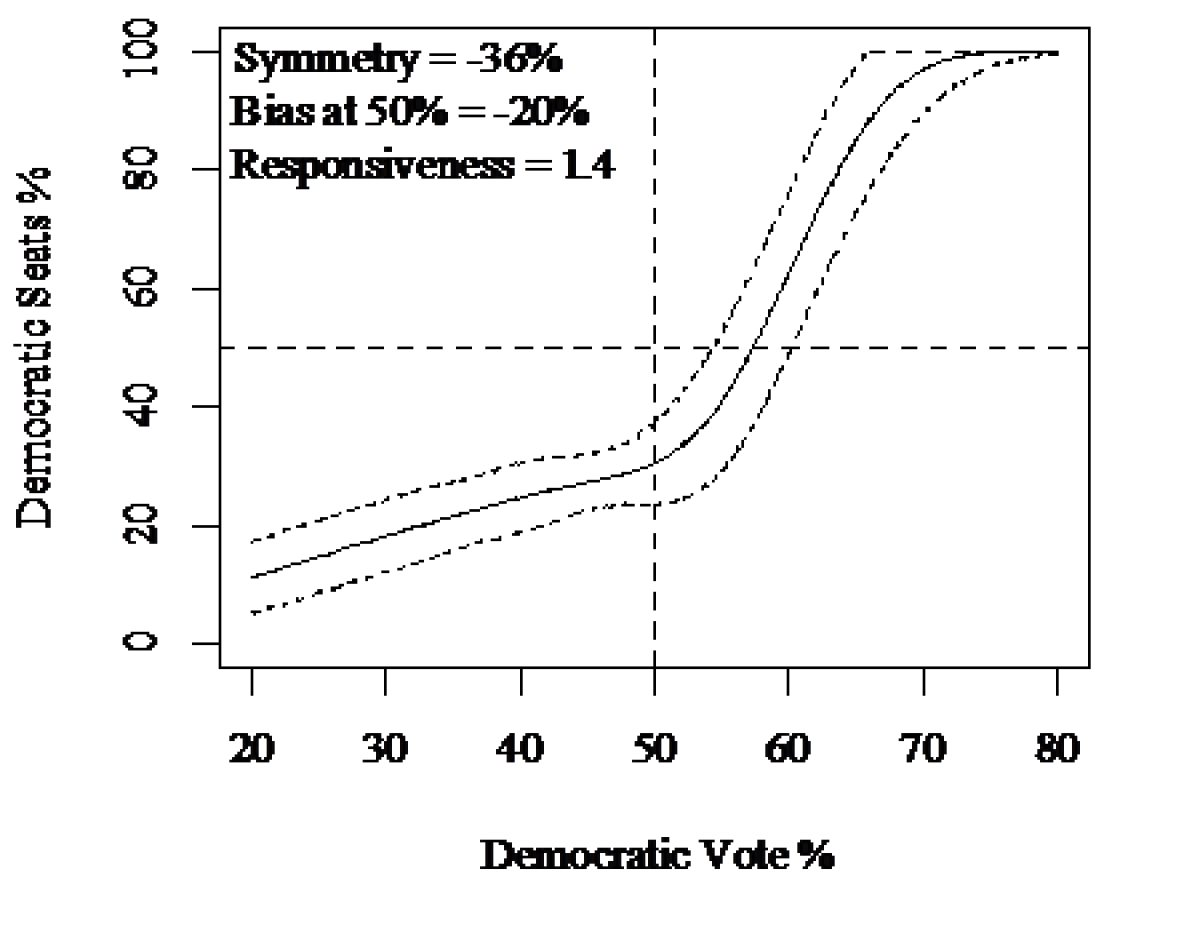
This article first appeared on the London School of Economics site.
Although the presidential race now appears close, the Republicans will in all likelihood retain control of the House of Representatives in 2016, even if the Democrats win a substantial majority of the popular vote.
This is the result of partisan gerrymandering—the way that state legislatures have drawn the congressional boundaries following the 2010 census. In our new book Gerrymandering in America we show that the Democrats would need to win between 54 percent and 55 percent of the vote to have any chance of retaking the House—a result comparable to that of 2008 when Barack Obama was first elected.
Of course, partisan gerrymandering has always existed in the United States. What has changed since 2010 is the magnitude and impact of the bias. Before 2010 partisan bias had been relatively minor, at least since the Supreme Court decided in the 1960s that all Congressional districts must have approximately equal population.
However, by our calculations, partisan bias tripled in the districting round that followed the 2010 census. Previously partisan gerrymandering was an idiosyncrasy of the American political process; now it determines the composition of the House.
This increase in partisan bias from 2010 followed the Supreme Court's decision in 2004 that there was no standard for adjudicating cases of partisan gerrymandering. The actual judgment in Vieth v. Jubelirer is complex, as there was no majority opinion.
Justice Antonin Scalia, joined by three other Justices, argued that no standard existed, and that political gerrymandering was inherently non-justiciable—it was a political matter in which the court had no business intervening. A fifth Justice (Justice Anthony Kennedy) agreed that no standard existed, but did not exclude the possibility that one might one day be found.
The effect, however, was the same. state governments did not have to fear judicial reprimand, so they were free to push partisan gerrymandering to the limit.
In Gerrymandering in America, we measure the degree of partisan bias in every state. It is notable that in the majority of states there is no significant partisan bias. However, in the 18 states where we do find partisan bias, this is often extreme.
The degree of asymmetry (the degree to which the two parties do not get the same number of seats for getting the same share of the vote) is above 30 percent in nine states. It is notable that the states where we find statistically significant bias are nearly all states where the state legislature draws the districts, and one party controls the entire process.
To illustrate, we can present our results graphically for two states. Figures 1 and 2 show the percentage of the seats the Democratic Party would get in each state with the current districting plan, if it got a certain percentage of the vote. This assumes approximately uniform partisan swings (the relative patterns of support for each party in different districts remains approximately constant, although there is a random effect to take idiosyncratic and local factors into account).
The central line is the percentage of seat the Democrats would win, while the upper and lower dotted lines are the 95 percent error bounds.

The districting plan in Minnesota is unbiased. As we can see, the graph is symmetric—both parties are treated equally. The graph also passes through the 50/50 point—if a party wins 50 percent of the vote, it expects to win 50 percent of the seats.
Minnesota is also highly responsive—if a party wins 1 percent more of the vote, it expects to win 3 percent more of the seats on average.

In Pennsylvania, things are very different. The seats-votes function is highly asymmetric—both parties are not treated equally. The asymmetry score is actually 36 percent in favor of the Republicans (where zero percent is unbiased and 100 percent means one party get all the seats even if it only gets 45 percent of the vote).
If both parties get 50 percent of the vote, the Republicans get a 20 percent advantage—they get 70 percent of the seats. Of course, in 2012 the Republicans took 13 out of 18 seats in Pennsylvania, even though the Democrats won more votes.
The districting plans in Alabama, Mississippi and Missouri are even more biased than Pennsylvania, and North Carolina, Louisiana, Ohio, Virginia, South Carolina and Tennessee are not far behind.
In our book, we debunk that myth that partisan bias is the inevitable result of the fact that Democratic voters tend to be concentrated in urban areas. It turns out that the states with the largest urban concentrations of Democrats (New York, New Jersey, California, Illinois) are precisely where the districting plans are not biased against the Democrats.
Furthermore, thanks to publicly available computer districting software, we can see that it is possible to draw unbiased (or only modestly biased) districts in every state. (See the work of Altman and MacDonald 1 2 3, and Wolf).
We also debunk the idea that the increase in partisan bias is a result of majority minority districts—the states that added majority minority districts in 2010 (notably California) are not where we find partisan bias.
However, the issue of partisan gerrymandering may well be revisited by the Supreme Court in the coming years. The decision in Vieth v. Jubelirer (2004), which gave a green light to the current round of partisan districting, was 5-4.
Following the death of Justice Scalia (who wrote the plurality opinion), it is no longer clear that there is a majority in the court in support of this decision. Of course, the future direction of the court will depend on the outcome of the presidential election in November.
Anthony McGann is a professor at the School of Government and Public Policy in at the University of Strathclyde. He is affiliated with the Institute for Mathematical Behavioral Sciences and the Center for the Study of Democracy at the University of California, Irvine.
Charles Anthony Smith is an associate professor of political science at UC Irvine. He is the author of The Rise and Fall of War Crimes Trials from Charles I to Bush II (Cambridge University Press 2012).
Michael Latner is an associate professor of political science and director of the Masters in Public Policy Program at California Polytechnic State University.
Alex Keena is a Ph.D. student at the School of Social Science at the University of California, Irvine.
This article is based on the authors' new book, Gerrymandering in America (Cambridge, 2016).
This article gives the views of the author, and not the position of USAPP—American Politics and Policy, nor the London School of Economics.
Uncommon Knowledge
Newsweek is committed to challenging conventional wisdom and finding connections in the search for common ground.
Newsweek is committed to challenging conventional wisdom and finding connections in the search for common ground.
About the writer
To read how Newsweek uses AI as a newsroom tool, Click here.








